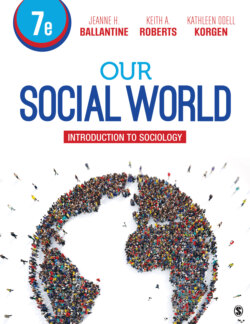Читать книгу Our Social World - Kathleen Odell Korgen - Страница 142
На сайте Литреса книга снята с продажи.
Fit Between Hardware and Software
ОглавлениеComputer software cannot work with incompatible machines. Some documents cannot be easily transferred to a different piece of hardware, although sometimes a transfer can be accomplished with significant modification in the formatting of the document. The same is true with the hardware of society and the software of culture. For instance, consider the size of families: The value (software) of having a large extended family, typical in agricultural societies, does not work well in the structure (hardware) of industrial and postindustrial societies that are mostly urban and crowded. Children in urban settings are generally a liability compared with those who work on the farm in agricultural societies. In short, there are limits to what can be transferred from one type of society to another, and the change or “formatting” may mean the new beliefs transferred to a different social setting are barely recognizable.
Attempts to transport U.S.-style “software” (culture)—individualism, capitalism, freedom of religion, and democracy—to other parts of the world illustrate that these ideas are not always successful in other settings. The hardware of societies may be able to handle more than one type of software or set of beliefs, but there are limits to the adaptability. Thus, we should not be surprised when ideas from one society are transformed into something different when they are imported to another society. If we are to understand the world in which we live and if we want to improve it, we must first fully understand other societies and cultures.
Thinking Sociologically
Team sports are a core component of most societies. How does participating in team sports help prepare people to successfully navigate life in the United States? In other societies? For example, what lessons learned through playing on an organized team might be relevant to life in the competitive business world or in a cooperative, noncompetitive society?
Because there is such variation among societies and cultures in what they see as normal, how do we learn our particular society’s expectations? The answer is addressed in the next chapter. Each society relies on the process of socialization to teach the culture to its members, especially new members, such as babies and immigrants. Humans go through a lifelong process of socialization to learn social and cultural expectations. The next chapter discusses the ways in which we learn our culture and become members of society.
